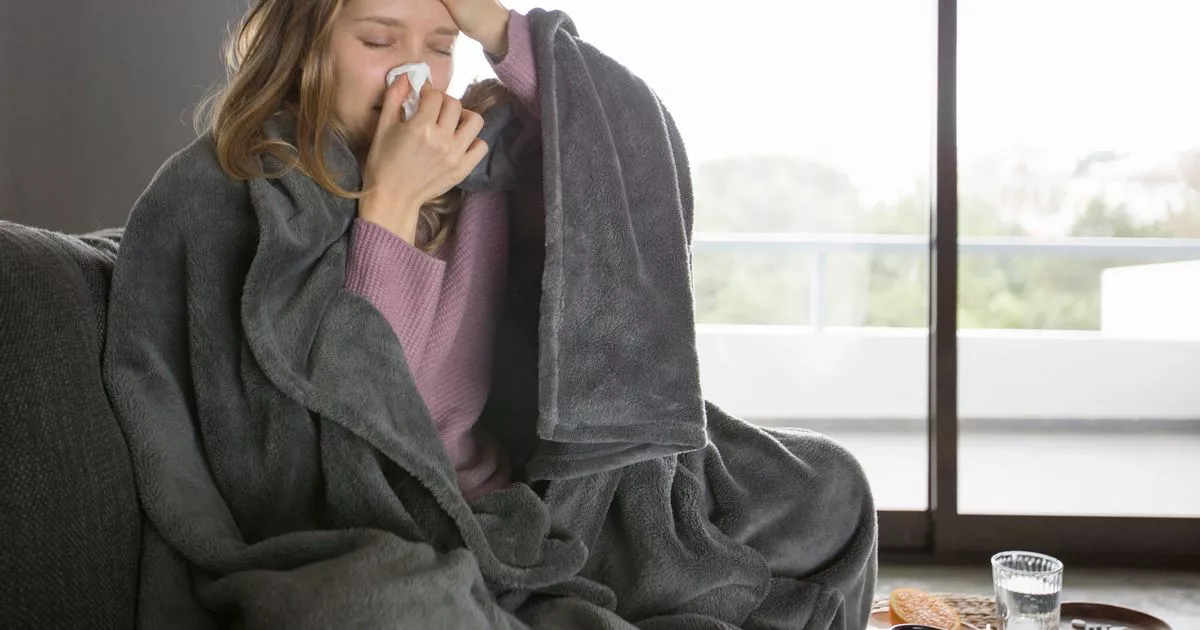Black Lives Matter protesters dump a statue of slaver Edward Colston in Bristol harbour during a protest last year (Pic: PA)
British capitalism was built on the Trans-Atlantic slave trade and key institutions were central to it.
Eleven former governors and 16 directors of the Bank of England owned slaves or directly profited from the trade between the 18th and 19th century.
The Royal Bank of Scotland, Barclays Bank, Lloyds Banking Group, HSBC and Royal Mail have also been linked to slavery.
Britain, the leading slave trading nation, transported 3.1 million Africans across the Atlantic Ocean between 1640 and 1808.
The 2.7 million people who survived the inhumane journey faced brutality and cruelty in the Caribbean.
Slaves were forced to produce sugar, cotton, tobacco and coffee. Slavers controlled them by flogging, covering open wounds in salt, cutting off body parts and rape. Life expectancy was 21 years old.
Capitalism justified slavery by claiming black people were inferior to white people. This built institutional racism into the system, where it remains today.
Huge sections of Britain’s economy were built around the slave trade. There was money in transporting people and goods, and in creating equipment needed.
The biggest profiteers were the ruling classes who made eye-watering wealth from plantations and trading.
But some of the money generated also fuelled industry, banks and buildings that still exist to create further profit. Other profits were invested in roads, docks, canals and mines.
Profiteers gave huge amounts to institutions including the National Gallery, the Royal Academy, the Tate, the Victoria and Albert and the British Museum.
We are often told about the investments and philanthropy that slave money funded.
So Tory slaver Edward Colston, director of the Royal African Company in 1680, invested today’s equivalent of £25 million in Bristol for schools, almshouses and poorhouses.
But the price of this was the transportation of 84,000 African men, women and children across the Atlantic, an estimated 19,000 of whom died on the journey.
Charitable
The heirs of slavers also talk up their “charitable” work. The Greene King pub chain and brewery, founded by slave owner Benjamin Greene, last year said it would pay reparations “to support the BAME community”.
And insurance market Lloyd’s of London said it would donate to charities “promoting opportunity and inclusion for black and minority ethnic groups”.
It had underwritten insurance policies on voyages transporting slaves. One of its founders, Simon Fraser, owned 162 slaves on the Castle Bruce estate in Dominica.
Firms with blood on their hands hope to divert people’s anger by making relatively minor contributions. The main beneficiaries of slavery remain the slavers and their heirs.
The slave trade was abolished in 1807, but slavery wasn’t abolished until 1833.
And freed slaves didn’t get compensation—their owners did for their “losses”.
Benjamin Greene was handed around £500,000 in today’s money when slavery was abolished, for three plantations and 231 slaves. And Fraser’s heirs were compensated with £400,000 in today’s money.
The government paid out some £20 million, equivalent to £17 billion today. Most of it went to a tiny number of slave owners—around 3,000 out of 47,000 got nearly half of the money.
The money the government borrowed to hand to slave owners wasn’t repaid until 2015. So people descended from slaves were paying the price for it through taxes.
Thanks to the Black Lives Matter movement, calls for reparations to be paid by people, places and organisations that gained from slavery are getting louder.
Anti-racists must fight to keep the focus on Britain’s bloody past. And those responsible or who benefited must pay.
‘Wonderful’ country estate’s foundations are wholly rotten
The Lascelles’ Harewood House estate in Yorkshire is advertised as “a wonderful place to feel inspired”. It is rooted in slavery.
MP Henry Lascelles, who bought the estate’s land, owned plantations and exported sugar. He was one of the wealthiest men in the early 18th century.
Henry helped create the “floating slave factory” where human cargo would be imprisoned on ships before being sold.
His son Edwin built Harewood and added 22 plantations and 2,947 slaves to the family’s portfolio.
Edwin’s cousin Edward, also an MP, inherited this wealth.
It’s worth £287 million in today’s money.
When slavery was abolished the family was handed £26,307 in six claims for 1,277 slaves in Barbados and Jamaica. They only sold their last plantation in 1970.
Harewood is owned by cousin to the queen David Lascelles, the 8th Earl of Harewood.
Commenting on a BBC documentary made about his ancestors he said, “We have to try to be positive.
“There’s absolutely nothing we can do about the past.
“I hope Harewood is a positive thing. It’s a nice place. We do a lot of work with schools, particularly in deprived urban areas
“What I don’t want to see happen is that Harewood becomes known as ‘that slavery place’.”
Liverpool—where statutes of slavers lined the streets
Liverpool’s 18th to 19th century economy was centred around the slave trade.
Of the 3.1 million African people taken across the Atlantic by the British, Liverpool’s ships transported half.
Between 1787 and 1807 all of its mayors were slave owners or traders. And with one exception, all MPs during the same period opposed abolition.
Investment was pumped into the city, even for causes such as the Liverpool Dispensary for the Sick.
Buildings in Liverpool are still decorated with carvings celebrating the slave trade.
Street names honour barbaric traders who built the city, such as Parr Street after Thomas Parr.
Slavers aren’t only celebrated in Liverpool.
The 18th century slave owner William Beckford’s held 13 sugar plantations, 22,000 acres of land and 3,000 slaves.
Beckford, an MP and Mayor of London, still has a statue in the Guildhall in the City of London.
Tory MP whose family did most damage to people of Barbados
The Drax family was one of the first to bring sugar to the Caribbean and commercialise its cultivation through large scale slave labour.
James Drax established the first plantation on the island of Barbados and later built Drax Hall Estate in the 1650s. The plantation killed 30,000 slaves over 200 years.
Professor Sir Hilary Beckles, chair of Caribbean Community’s Reparations Commission, said the Draxes have “done more harm and violence to the black people of Barbados than any other”.
In 1836 John Erle-Drax was compensated £4,293, 12 shillings and 6 pence for 189 slaves.
Tory MP for South Dorset Richard Grosvenor Plunkett-Ernle-Erle-Drax now owns the family’s fortune. He’s the wealthiest landowner in the House of Commons, thanks to slavery.
And he owns Drax Hall Estate in Barbados—including the original plantation—which still grows sugar.
When questioned about his family’s cruel legacy during the 2010 election campaign, Drax complained that critics were “using the old class thing” to undermine him.
Last year he said, “No one can be held responsible today for what happened many hundreds of years ago.”
Liberal versions of slavery reparations don’t cut it
What would it take to compensate black people in Britain for the horrors the slave trade inflicted on so many millions of their ancestors?
Is there a sum of money that can take account of the brutality of slavery and the endemic racism it created?
Or will an apology from the queen or the government suffice?
Councillors in Bristol last week passed what they think is the beginning of an answer—a motion demanding an all-party parliamentary commission of inquiry.
This should include the question of monetary compensation, but also note the contribution of “African civilisation, culture and people”.
Questioning British capitalism’s reliance on slavery and racism is a good thing. But there are real weaknesses in the council’s approach.
First, by insisting that parliament take up the issue, councillors seek to pass the initiative from the streets to a privileged layer of politicians.
This undermines the Black Lives Matter (BLM) movement, which has mobilised huge protests. There are good reasons why Bristol councillors would welcome such a move.
A court in the city is currently trying those accused of trashing the statue of slave trader Edward Colston, gloriously felled by a multiracial crowd.
Street protests carry the persistent danger of radicalism, and few councillors want much of that.
Second, reparations are being posed as a means of creating a “level playing field”. It’s as though vast racial inequalities are an aberration that can be ironed out with a package of reforms.
But one of the key messages of BLM is that racism is structural. It is not a sign that the system is “malfunctioning” but rather that it is functioning exactly as it was intended to.
Capitalism cannot exist without divisions such as race. It has embedded them deep into all of its key institutions. Together these institutions help create a racist society.
It wouldn’t be possible to sustain such an exploitative regime if those at the bottom of society didn’t often see each other as competitors and enemies. Racism performs exactly that function.
So the idea of capitalism without racism is a fantasy. And the debate around financial reparations raises other questions.
Who gets control of any monies that are eventually released?
Disadvantage
Backers of the Bristol motion envisage community programmes that deal with things such as food poverty, health inequality and educational disadvantage. All potentially good things.
But the people in charge of any such projects will not be poor people, black or white, but their better off “representatives”.
Instead of empowering those most affected by racism, this top‑down approach entrenches the black middle class.
This doesn’t measure the success of black liberation by whether oppressed people are in a better position to make, and fight for, their own demands.
Instead, it is measured by how many black and brown faces adorn glossy council leaflets.
Most importantly, the demand for an inquiry will seek to divert anger at racism into acceptable channels.
So rather than targeting the police for the way racism is so engrained in its ranks, we will be encouraged to “engage” with them.
And rather than revealing the bloody history of many of Britain’s top firms, we will be expected to be assuaged by the offer of a funding grant from their directors.
Some of the biggest advances in the fight against racism in our lifetimes came last year.
BLM protests put today’s racism, and its roots in this country’s sordid past, at the centre of the political agenda.
Seen in this light, the fight for reparations could be far more radical. It could encompass demands to cancel the debts of countries in the Global South.
It could call for the lifting of all patents on vital vaccines and medicines.
It could fight for the abolition of state institutions here that play a key role in oppressing black people—including the police and immigration forces.
And it could demand back the wealth from those families and firms who stole from Africa.
Source link


